In their systematic review of the literature Federica Pinna and team (2022) found higher prevalence of mental health disorders among trangender Individuals in comparison to the general population or cisgender individuals. This was also found by other researchers (Aparicio-García 2018). What does this mean for those who have experienced trauma? This blog is going to examine some of the results reported in the review in relation to trauma.
What is a Systematic Review?
“Systematic reviews, as the name implies, typically involve a detailed and comprehensive plan and search strategy derived a priori, with the goal of reducing bias by identifying, appraising, and synthesizing all relevant studies on a particular topic.” Uman,(2011)
Trauma and the Transgender community
We know that traumatic experiences exist in the transgender community. For example, Jackson and colleagues (2022) described the experience of transgender women in the past year, they reported 36.8% experienced any form of violence. This was further broken down into:
- Sexual (16.9%)
- Intimate partner (14.9%)
- Other physical (25.4%)
Similarly, Reisner and colleagues (2016) noted that PTSD prevalence was estimated at 6.8% of the U.S. general adult population. In contrast they reported that prevalence estimates in transgender samples ranged from 18 to 61%.
PTSD and comorbidity
Brady and team (2000) reported that “The vast majority of individuals with PTSD meet criteria for at least one other psychiatric disorder, and a substantial percentage have 3 or more other psychiatric diagnoses.”
PTSD and under reporting
“Because people may have symptoms of PTSD for many years before seeking treatment, or have subsyndromal PTSD, the prevalence of PTSD may be underreported.” National Academies Press (US); 2014
Some findings of a systematic review
With prevalence,comorbidity, and the possibility of underreporting in mind here are some of the findings of Pinna and team (2022) with comments in relation to trauma.
Finding:
Compared to non-Transgender individuals, the prevalence of non-suicidal self-injurious behaviours and completed suicide was estimated to be 13-times higher in the Transgender population.
Impulsivity and suicide risk
Impulsive behaviours can be a symptom of PTSD. Often self harm is part of an impulsive coping mechanism for those experiencing PTSD. High rates of suicidal ideation amongst those with PTSD (Sareen 2005, 2007) and subthreshold PTSD (Jakupcak 2011) has been reported in the academic literature .
Finding:
There was a higher prevalence of transgender individuals, versus cisgender individuals, being engaged in sex work; further, sex work had a higher prevalence for transgender women.
High risk occupations
Commonly Defence Force Members, Fire Fighters and Police are considered high risk occupations for trauma and PTSD (Schäfer, 2020). Sex work clearly has a number of risks that lead to it being a high risk occupation for PTSD.
Finding:
There was a high prevalence of substance use disorders amongst transgender individuals, including alcohol use disorder, tobacco use disorder, and/or illicit substance use disorders. One study found up to three-quarters of study participants were using alcohol, and nearly one third were using multiple substances.
Avoidance and substance use
One of the significant symptoms of PTSD is known as avoidance. This symptom occurs when an individual with PTSD stays away from anything that might remind them of traumatic experiences This can mean avoiding places, people, sounds, smells, objects and social dynamics. Importantly, it also includes avoiding thoughts and feelings. Alcohol is very well known for its effect on thoughts and feelings. Sometimes blocking them out very effectively. The same may be true of many illicit substances, as well as over the counter substances.
Conclusion
If you are a member of the transgender community struggling with mental health difficulties seeking treatment for these difficulties is important. In addition, if you have had traumatic experiences or work in an area that might be high risk it may be worth considering if some of your mental health difficulties are related to PTSD or trauma. Consulting about this with a health professional will help you understand your mental health experience.
If you or someone you know is struggling with PTSD, the Centre for Clinical Psychology in Melbourne is here to support you. Book an appointment today by calling 03 9077 0122 or visiting our website at https://ccp.net.au/booking/.
References
Aparicio-García, M., Díaz-Ramiro, E., Rubio-Valdehita, S., López-Núñez, M., & García-Nieto, I. (2018). Health and Well-Being of Cisgender, Transgender and Non-Binary Young People. International Journal of Environmental Research and Public Health, 15(10), 2133. MDPI AG. Retrieved from http://dx.doi.org/10.3390/ijerph15102133
Brady, K. T., Killeen, T. K., Brewerton, T., & Lucerini, S. (2000). Comorbidity of psychiatric disorders and posttraumatic stress disorder. The Journal of clinical psychiatry, 61 Suppl 7, 22–32.
Committee on the Assessment of Ongoing Efforts in the Treatment of Posttraumatic Stress Disorder; Board on the Health of Select Populations; Institute of Medicine. Treatment for Posttraumatic Stress Disorder in Military and Veteran Populations: Final Assessment. Washington (DC): National Academies Press (US); 2014 Jun 17. 2, Diagnosis, Course, and Prevalence of PTSD. Available from: https://www.ncbi.nlm.nih.gov/books/NBK224874/
Jackson, A., Hernandez, C., Scheer, S., Sicro, S., Trujillo, D., Arayasirikul, S., McFarland, W., & Wilson, E. C. (2022). Prevalence and Correlates of Violence Experienced by Trans Women. Journal of women’s health (2002), 31(5), 648–655. https://doi.org/10.1089/jwh.2021.0559
Jakupcak, M., Hoerster, K. D., Varra, A., Vannoy, S., Felker, B., & Hunt, S. (2011). Hopelessness and suicidal ideation in Iraq and Afghanistan War Veterans reporting subthreshold and threshold posttraumatic stress disorder. The Journal of nervous and mental disease, 199(4), 272–275. https://doi.org/10.1097/NMD.0b013e3182124604
Kessler RC, Sonnega A, Bromet E, Hughes M, Nelson CB. Posttraumatic Stress Disorder in the National Comorbidity Survey. Arch Gen Psychiatry. 1995;52(12):1048–1060. doi:10.1001/archpsyc.1995.03950240066012
Pinna, F., Paribello, P., Somaini, G., Corona, A., Ventriglio, A., Corrias, C., Frau, I., Murgia, R., El Kacemi, S., Galeazzi, G. M., Mirandola, M., Amaddeo, F., Crapanzano, A., Converti, M., Piras, P., Suprani, F., Manchia, M., Fiorillo, A., & Carpiniello, B. (2022). Mental health in transgender individuals: A systematic review. International Review of Psychiatry, 34(3–4), 292–359. https://doi.org/10.1080/09540261.2022.2093629
Reisner, S. L., White Hughto, J. M., Gamarel, K. E., Keuroghlian, A. S., Mizock, L., & Pachankis, J. E. (2016). Discriminatory experiences associated with posttraumatic stress disorder symptoms among transgender adults. Journal of counseling psychology, 63(5), 509–519. https://doi.org/10.1037/cou0000143
Sareen, J., Cox, B. J., Stein, M. B., Afifi, T. O., Fleet, C., & Asmundson, G. J. (2007). Physical and mental comorbidity, disability, and suicidal behavior associated with posttraumatic stress disorder in a large community sample. Psychosomatic medicine, 69(3), 242–248. https://doi.org/10.1097/PSY.0b013e31803146d8
Sareen, J., Houlahan, T., Cox, B. J., & Asmundson, G. J. (2005). Anxiety disorders associated with suicidal ideation and suicide attempts in the National Comorbidity Survey. The Journal of nervous and mental disease, 193(7), 450–454. https://doi.org/10.1097/01.nmd.0000168263.89652.6b
Schäfer, S. K., Sopp, M. R., Staginnus, M., Lass-Hennemann, J., & Michael, T. (2020). Correlates of mental health in occupations at risk for traumatization: a cross-sectional study. BMC psychiatry, 20(1), 335. https://doi.org/10.1186/s12888-020-02704-y
Uman L. S. (2011). Systematic reviews and meta-analyses. Journal of the Canadian Academy of Child and Adolescent Psychiatry = Journal de l’Academie canadienne de psychiatrie de l’enfant et de l’adolescent, 20(1), 57–59.






